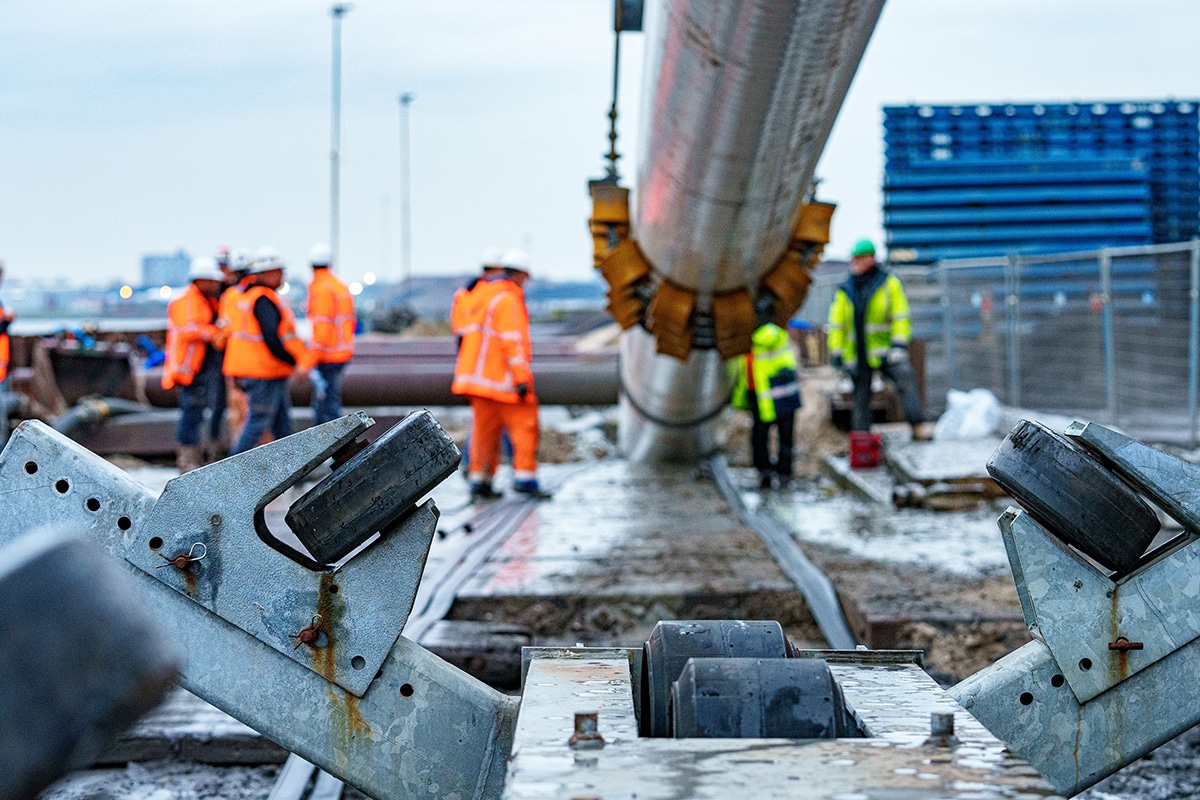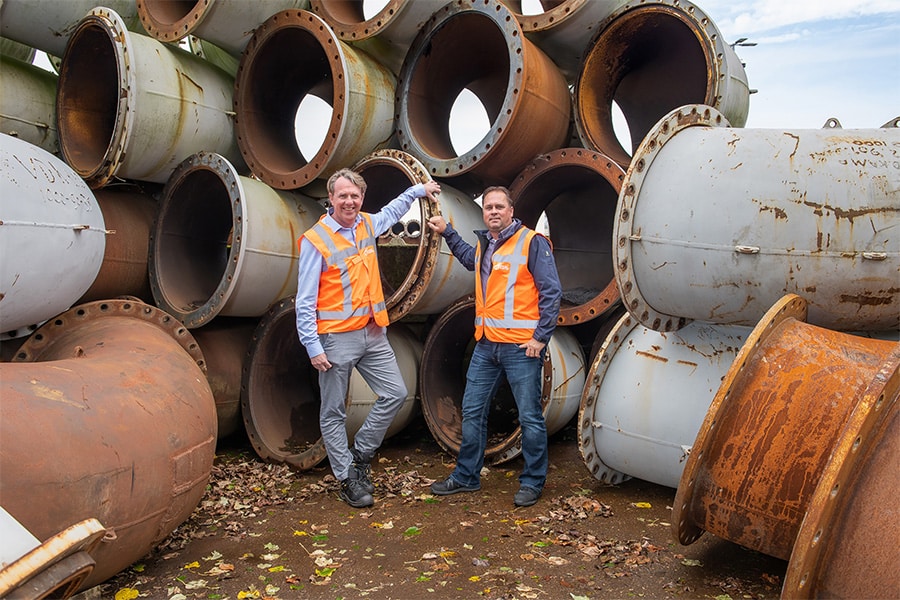
Reinforcing steel for the underwater concrete floor of the Rottemer Tunnel
In order to build the Rottemer Tunnel "in the wet," construction consortium De Groene Boog opted for a reinforced underwater concrete floor. Due to the complexity of working under water, it was desirable to deliver the reinforcement steel as prefabricated as possible, whereby a perfect fit was a requirement. Specialist BCS (Buig Centrale Steenbergen) of Hoogeveen was engaged because of their far-reaching expertise and innovative working method. An interview with Harry Steenbergen, Gerry Meijer and management support Inge Oosting, about the delivery of approximately 30,000 tons of steel to De Groene Boog.

Eliminate clashes in design in advance
"We supply all the reinforcing steel for the underwater concrete floor and deck of the tunnel," Steenbergen opens the conversation. "The walls and deck will be assembled on site. In the preliminary phase, we were involved in the design process early on; we worked everything out in 3D so we could identify and discuss any bottlenecks. For example, there is a pile construction with an anchorage towards the rebar. By working in 3D, clashes* can be monitored. It's precision work from start to finish." Meijer outlines the amount of steel needed for the tunnel: "About 14,000 tons are needed for the underwater concrete floor, another 14,000 tons for the walls and deck, and about 2,000 tons for the entrances. So a total of about 30,000 tons of reinforcing steel."
(*Through Clash Detection, conflicts in the object to be built are detected as early as the design phase)
As many as 90% prefabricated
Meijer continues: "We had to take into account the adjustable formwork designed for the walls. The cuttings for the walls are taken directly into the underwater concrete. That listens very precisely, but thanks to designing in 3D, that process is well under control. We started producing the reinforcing steel for the underwater concrete floor and deck and have made the first deliveries for that.
Then we are talking about between 400 and 500 shipments to the construction site, where we prepared everything on site." Steenbergen adds, "As much as 90% of the deliveries were prefabricated by us."
Specialist in reinforcing steel for tunnels
"The prefabricated baskets for the underwater concrete are assembled in situ by divers," said Steenbergen. "That's why we felt it was important to make our 3D model in collaboration; the diving company was involved in the design phase by our client. After all, their people have to work with it under exceptional conditions." BCS knows exactly what is needed for this kind of complex job and can rely on the necessary experience. "We are being approached more and more by the infra world. For example, you can find our reinforcing steel at the Gaasperdamer Tunnel and the tunnel in the Groningen ring road," Steenbergen continues. Meijer adds, "We have now built up a specialism in reinforcing steel for tunnels. Our machinery is even equipped for that. The icing on the cake is the 3D design in the preliminary phase. In this phase, by designing together, you can create a product that reduces the client's workload and significantly reduces failure costs. So investing upfront really pays off at the back end of the chain."

Fully automated production
Class B500 rebar is being used in the project. Steenbergen lists, "For the underwater concrete floor, we largely apply thicknesses of 32 mm and 40 mm. For the walls, the thickness varies between 16 mm and 25 mm, and for the decks it is between 16 mm and 32 mm. We produce the reinforcement nets up to 40 mm thickness fully automated -robot controlled- in our factory. Nets of 3.5 meters by 14 meters in one piece are no problem in this regard." Noting that being able to process 40 mm thick steel fully automated is truly unique, Meijer says, "Transporting prefabricated nets of such dimensions is also a titanic task." By automating the production process, BCS can ensure the quality of every net that leaves the factory. The machines are controlled directly from the 3D model. "Of course, another visual output check takes place," said Steenbergen. "By resolving all clashes upfront in the 3D design and producing with great precision, we deliver a 'custom suit' in rebar. That works sustainably." The rebar being processed is partly made up of recycled scrap, making production not only sustainable but also circular.
Always looking for innovative solutions
Oosting: "Our expertise and way of working allow us to be innovative. This is also necessary in projects such as A16 Rotterdam, since solutions must be found for issues that in turn arise from the innovative thinking of the designers at De Groene Boog. We are therefore actively involved in the preliminary process on a large scale. Not only is our innovative strength important in this type of work, but our production capacity and logistics are also crucial. For example, we have multiple production locations and storage points in the Netherlands, which is essential for this type of work. After all, planning is sacred. With 30 tractors and 100 trailers that we load directly from production, we can deliver 'just in time'."

'Made in Hoogeveen'
"People work here with pride and in addition to 'Made in Hoogeveen' our work is also given the predicate 'Since 1953'. The cart pullers within our organization always know how to get the entire staff excited about these kinds of projects, all noses are in the same direction. We do it as a team," Oosting says.
In conclusion, we ask Steenbergen if that 1953 company now only takes orders of this size. Steenbergen laughs and says, "You won't believe it, but should you want to make a rebar floor for your new shower, we'll just help you. The size of the projects we do these days says nothing about our approachability. We are also too down-to-earth for that. He who does not honor the small does not deserve the big!"




